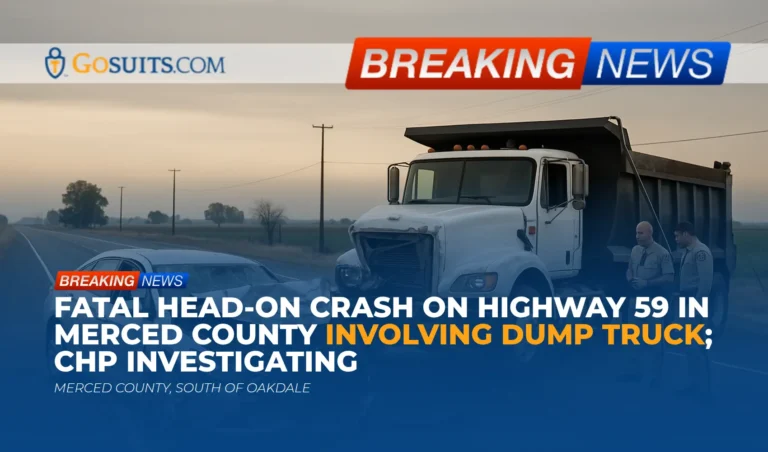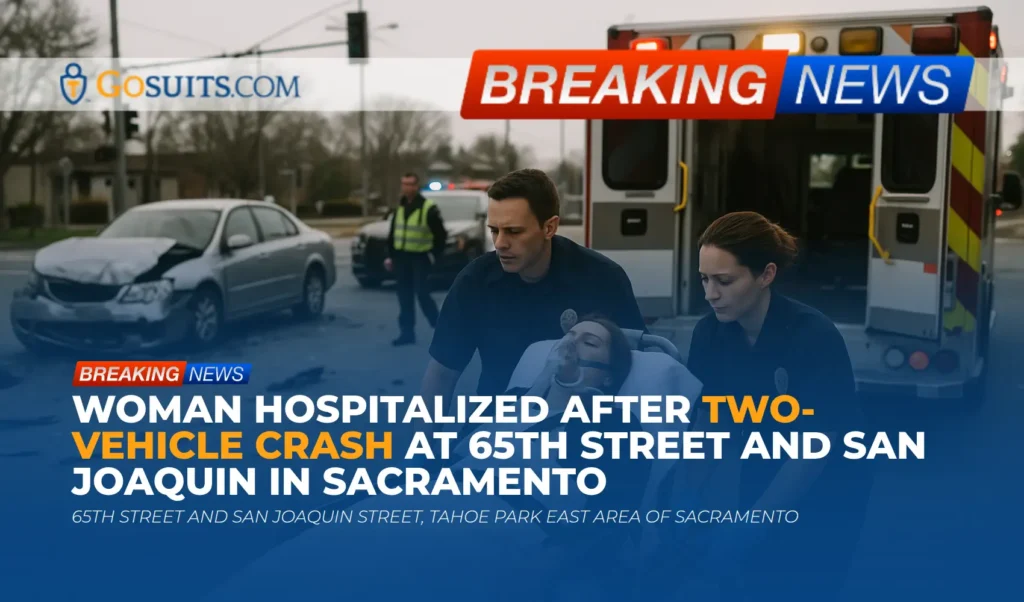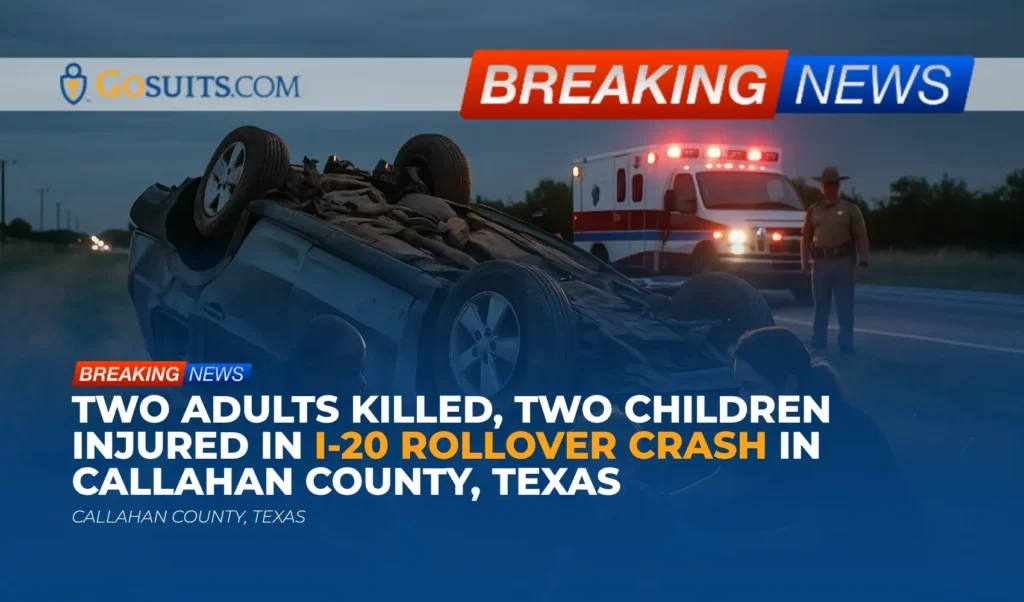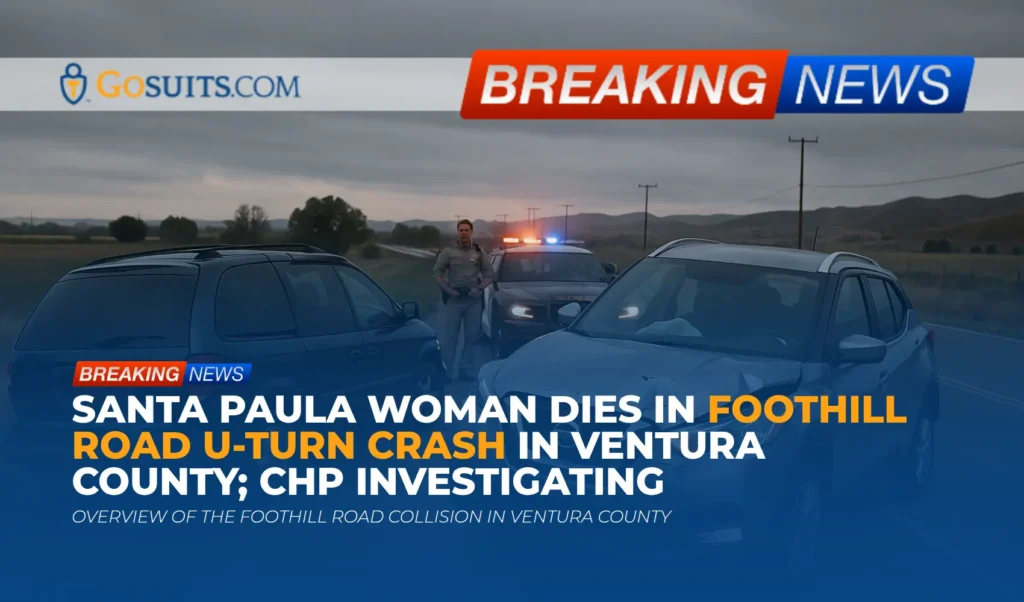- Overview of the Highway 59 head-on collision in Merced County
- What law enforcement has reported so far
- Why head-on crashes are often catastrophic
- Key steps to preserve evidence and information
- How to obtain official records and documents
- Understanding potential civil liability in a head-on crash with a dump truck
- Insurance and claims considerations after a fatal crash
- What a thorough independent investigation can add
- Community safety notes for Highway 59 corridors
- Practical resource list for families
- Commentary from Gosuits Merced County, California Personal Injury Attorney
- Why timely action matters now
Overview of the Highway 59 head-on collision in Merced County
In the early morning hours, around 6:20 a.m., a head-on collision occurred on Highway 59 in Merced County, south of Oakdale. According to initial information, a Ford Fusion crossed into oncoming traffic and collided head-on with a dump truck. The driver of the Ford was declared deceased at the scene. The truck driver did not report injuries. The California Highway Patrol indicated that investigators are still determining whether alcohol or drugs played any role. At this stage, no definitive cause has been identified, and fault has not been assigned.
For families and community members, events like this are sudden and devastating. The purpose of this article is to provide clear, respectful information about what typically happens after a fatal collision, what records exist and how to request them, common civil-law considerations in crashes involving commercial trucks, and practical steps that can help preserve facts while avoiding missteps with insurers.
What law enforcement has reported so far
Based on the available description:
- Where: State Route 59 in Merced County, south of Oakdale.
- When: Approximately 6:20 a.m.
- Vehicles: A Ford Fusion and a dump truck.
- Immediate outcome: The Ford driver died at the scene; the dump truck driver was uninjured.
- Status: The California Highway Patrol (CHP) is investigating, including whether impairment was a factor.
CHP will prepare a traffic collision report and may conduct or coordinate specialized analyses, such as scene measurements, vehicle inspections, or a Multidisciplinary Accident Investigation Team referral in complex cases. Family members can typically request the collision report once it is available, which often occurs after basic investigation steps are completed. The report may include diagrams, witness statements, and a summary of contributing factors. Information about CHP collision reports is available through the CHP’s public pages at chp.ca.gov.
Why head-on crashes are often catastrophic
Head-on collisions are among the most severe roadway events because the closing speeds combine. Even at moderate speeds, the forces can exceed what vehicle safety systems are designed to handle. In crashes involving a commercial dump truck and a passenger car, the disparity in mass and ride height increases injury risk for the car’s occupants. National road safety agencies describe how higher mass and front structure height in large trucks can worsen injury severity for other road users compared to collisions between similar-sized cars. For general large truck safety and data resources, see the National Highway Traffic Safety Administration at nhtsa.gov.
Common contributors to centerline crossings include fatigue, distraction, medical emergencies, roadway conditions, mechanical failures, and impairment. Investigators typically examine the scene for tire marks, gouges, debris patterns, and vehicle data to determine the point of impact and pre-impact paths. Commercial vehicles may also carry electronic logging devices and telematics that record vehicle movements and hours-of-service information, governed by federal rules administered by the Federal Motor Carrier Safety Administration, see fmcsa.dot.gov.
Key steps to preserve evidence and information
In the wake of a fatal collision, documentation and timing matter. Evidence from vehicles, roadway markings, and onboard electronic systems can be time sensitive. While every case is different, the following actions are commonly important:
- Secure the collision report. CHP’s report is the foundational document that identifies parties, vehicles, witnesses, conditions, and initial observations.
- Request and retain coroner records. If an autopsy or coroner’s examination is performed, the report and any toxicology findings can clarify medical issues and contribute to understanding causation.
- Preserve vehicle data. Passenger vehicles and commercial trucks may store crash-related data. Prompt notifications to involved parties to preserve electronic and maintenance records can prevent loss.
- Document the scene and vehicles. If safe and permissible, photographs of the scene, roadway, vehicle resting positions, and damage can supplement official documentation.
- Identify commercial carrier information. For dump trucks and other commercial vehicles, note the company name, any USDOT number displayed on the vehicle, and plate numbers. Public safety and compliance profiles can often be looked up via the Federal Motor Carrier Safety Administration’s SAFER system at safer.fmcsa.dot.gov.
Before communicating with any insurance company, it is prudent to speak with a qualified attorney. Statements can be recorded, interpreted, and later used to shape liability arguments and damages evaluations.
How to obtain official records and documents
Several official documents may exist in a fatal crash. Availability and timing vary by agency and by the scope of the investigation. Below is a practical overview of key records and how they are generally requested in California.
California Highway Patrol collision report
CHP prepares a traffic collision report for crashes it investigates. The report is usually available to involved parties and next of kin upon request. The California Highway Patrol provides information for the public and maintains Area Offices that handle report requests; you can identify the appropriate office at chp.ca.gov/find-an-office.
CHP typically uses a standard request process that includes a written form and proof of eligibility. While offices sometimes accept in-person requests, many require mail-in submissions. For general public information, consult CHP’s website at chp.ca.gov and contact the specific Area Office that investigated the crash to confirm current procedures.
Death certificate and vital records
Certified death certificates in California are issued through county recorders in coordination with the California Department of Public Health’s Vital Records program. Guidance on obtaining certified copies is available from CDPH at cdph.ca.gov under Vital Records. Families typically need certified copies for estate, insurance, and other administrative purposes.
Coroner and autopsy reports
In California, county sheriff-coroner or coroner offices oversee medicolegal death investigations. These records may include the autopsy report, coroner’s investigative narrative, and toxicology. Availability depends on the status of testing and any legal holds. The coroner’s office can advise on request procedures, fees, and expected timeframes.
If an autopsy was not performed, the coroner’s office may still have an investigative file with scene findings and cause and manner of death determinations. Families can usually request copies once the case is closed.
Toxicology and crash reconstruction records
Toxicology testing schedules vary by county and laboratory workload. Results can take several weeks or longer. If the collision involved extensive reconstruction work by law enforcement, additional technical reports may be produced; availability generally follows the completion of the investigation. For public records requests in California, the Attorney General’s office provides general information on the California Public Records Act, including the public’s rights and agency obligations, at oag.ca.gov/consumers/general/pra.
At-a-glance record overview
|
Record |
Where to request |
Typical availability |
Reference
|
|
CHP Collision Report |
CHP Area Office that investigated |
Varies by case; after initial investigation phases |
|
|
Death Certificate |
County Recorder or CDPH Vital Records guidance |
Usually after coroner files death certificate |
|
|
Coroner/Autopsy Report |
County Sheriff-Coroner or Coroner’s Office |
After case closure and lab results |
Local coroner’s office site or clerk |
|
Toxicology |
Through coroner case file |
Often several weeks or more |
Agency-specific timelines |
|
Commercial Carrier Info |
FMCSA SAFER database |
Public lookup, immediate |
Understanding potential civil liability in a head-on crash with a dump truck
Liability in a head-on collision is fact dependent. Even when a vehicle crosses the centerline, investigators still examine whether other factors contributed, including commercial vehicle operations and roadway conditions. In California, wrongful death and survival claims are governed by statutes and case law. The general two-year civil limitations period for wrongful death claims is set out in the California Code of Civil Procedure section 335.1, available at leginfo.legislature.ca.gov. Certain claims against public entities, such as dangerous condition of public property claims, may require a government claim notice within six months under Government Code section 911.2, see leginfo.legislature.ca.gov.
From a civil perspective, potential avenues of analysis often include:
- Driver factors. Fatigue, distraction, medical events, and impairment are typical focal points. Investigators consider witness statements, phone records, toxicology, and vehicle data.
- Commercial truck operation. For a dump truck, investigators may review maintenance history, brake condition, load securement, weight, tire condition, and driver hours worked. Federal rules govern hours-of-service and recordkeeping for many commercial operations, summarized at fmcsa.dot.gov.
- Roadway environment. Visibility, signage, lane markings, shoulder conditions, and any history of similar crashes near the location can bear on causation. Allegations against a public entity require early notice procedures under the Government Claims Act.
- Comparative fault principles. California follows comparative fault rules, which means responsibility can be apportioned among multiple contributors based on their share of fault. While the precise allocation is case specific, the principle allows a court or jury to consider multiple causes in determining damages.
None of the above assigns fault in this crash. These topics illustrate what civil investigators review when determining how and why a head-on collision occurred and whether any breach of duty contributed to the outcome.

Potential factors under investigation
Based on the initial report that one vehicle crossed into oncoming traffic, investigators typically seek to determine why the lane departure happened and whether any other vehicle’s actions or equipment conditions influenced the event. Examples include:
- Pre-impact steering and braking. Skid marks and yaw markings can show avoidance or lack thereof.
- Speed. Vehicle data and scene measurements may help estimate speeds.
- Visibility. Sun glare, lighting conditions, and weather are noted in CHP reports.
- Mechanical integrity. Tire blowouts, brake failures, and steering issues are examined.
Commercial truck considerations and records
Commercial carriers typically maintain driver qualification files, hours-of-service logs or electronic logging device records, vehicle inspection and maintenance files, and load records. Federal guidance for hours-of-service and recordkeeping is at the FMCSA website, including summaries at fmcsa.dot.gov. Time-sensitive requests that ask carriers to preserve data such as dash camera video, telematics, and electronic control module data can be important. California also administers commercial vehicle safety programs and inspections through CHP; information for the public is centralized at chp.ca.gov.
Roadway and public entity issues
Road design, signage, pavement markings, and sightlines may be reviewed to identify any roadway factors. Claims alleging a dangerous condition of public property or negligent maintenance often require early notice and are governed by strict timing rules. In California, written government claims typically must be presented within six months for personal injury and wrongful death claims against public entities, see Government Code section 911.2 at leginfo.legislature.ca.gov.
Insurance and claims considerations after a fatal crash
When a crash involves a commercial truck and a passenger vehicle, multiple insurance policies may be in play. There can be policies for the truck operator, the motor carrier, and potentially for a shipper or contractor if the vehicle was operating under a service arrangement. There may also be uninsured or underinsured motorist coverage on the decedent’s own policy. Navigating which policies apply and in what order is complex.
Two cautions are common:
- Do not rush recorded statements. Insurers often seek interviews quickly. What is said can be taken out of context and used later to contest liability or damages. It is wise to speak with an attorney before engaging in any recorded or written statements to an insurer.
- Be mindful of documentation requests. Broad medical or employment authorizations can release more information than necessary. Carefully review any requests and obtain guidance before signing.
Why early legal guidance matters before speaking with insurers
Insurance companies manage risk and payouts. Adjusters may appear helpful while directing conversations toward admissions or interpretations that reduce claim value. Having an advocate early helps structure communications, ensures preservation letters go out promptly to commercial carriers, and protects against inadvertent waivers. This article provides general information and is not a substitute for personalized guidance.
California timelines that can affect claims
- Wrongful death statute of limitations. California generally allows two years to file a wrongful death action, see Code of Civil Procedure section 335.1 at leginfo.legislature.ca.gov.
- Government claim notice. Claims against public entities often require a written claim within six months, see Government Code section 911.2 at leginfo.legislature.ca.gov.
Other deadlines may apply depending on the parties involved and the evidence at issue. Preserving vehicles and electronic data should be done as soon as possible.
What a thorough independent investigation can add
Beyond the official law enforcement investigation, independent review can fill gaps and test alternative explanations. Typical steps include:
- Scene re-examination. Measurements, line-of-sight studies, and supplemental photography can catch details missed early.
- Vehicle inspections. Inspecting both vehicles for mechanical issues, event data recorder outputs, and restraint system performance can clarify causation and occupant kinematics.
- Records requests. Promptly requesting commercial carrier records, driver logs, and maintenance documentation can prevent loss due to routine retention schedules.
- Witness follow-up. Re-interviewing witnesses can add nuance and correct inconsistencies.
The goal is to assemble a complete picture of what happened and why, so responsibility is accurately assigned and families have answers.
Community safety notes for Highway 59 corridors
Two-lane highways with opposing traffic, like segments of Highway 59, can present elevated risk for head-on crashes, particularly where passing is permitted, where sightlines are limited, or where traffic mixes with heavy vehicles. National and state safety agencies have documented that median separation, shoulder improvements, and rumble strips can reduce cross-centerline crashes. For general guidance and data resources on roadway safety countermeasures, see the Federal Highway Administration at fhwa.dot.gov and the California Office of Traffic Safety at ots.ca.gov.
Local crash patterns are often considered by transportation agencies when prioritizing improvements. Public input and crash data are part of that process.

Practical resource list for families
Families seeking information after a fatal collision often need to contact multiple offices. Here are common points of contact and the types of help they provide. Agency procedures and availability can change, so it is best to call ahead or check official webpages.
- California Highway Patrol, Area Office that investigated
- Purpose: Request the collision report and confirm the status of the investigation.
- How: Identify the correct CHP Area Office at chp.ca.gov/find-an-office. Ask about the process to request a traffic collision report as a next of kin.
- County Sheriff-Coroner or Coroner’s Office
- Purpose: Obtain autopsy, coroner investigative reports, and toxicology results when available.
- How: Contact the county coroner’s office that handled the case. Request information on when records will be released and applicable fees.
- California Department of Public Health, Vital Records
- Purpose: Guidance on obtaining certified death certificates needed for insurance, estate, and administrative matters.
- How: See CDPH’s Vital Records information at cdph.ca.gov and follow the instructions for death records.
- Federal Motor Carrier Safety Administration
- Purpose: Public lookup of commercial carrier safety and registration information.
- How: Use the SAFER system at safer.fmcsa.dot.gov if you know the carrier name or USDOT number.
- Public records requests
- Purpose: Request agency records under the California Public Records Act where appropriate.
- How: Review the California Attorney General’s guidance at oag.ca.gov/consumers/general/pra before submitting written requests.
- Emotional support resources
- Purpose: Free, confidential support for people experiencing grief, stress, or crisis.
- How: SAMHSA’s National Helpline provides 24-7 assistance at samhsa.gov/find-help/national-helpline.
Commentary from Gosuits Merced County, California Personal Injury Attorney
Our hearts go out to everyone affected by this crash. Losing a loved one on a familiar highway is a profound tragedy. This article is offered for educational purposes to help community members understand the steps that often follow a fatal collision and the kinds of issues that civil investigations examine.
Head-on collisions on two-lane corridors are among the most unforgiving events on our roads. Even when one vehicle crosses the centerline, a careful, methodical review remains essential. For a crash involving a commercial dump truck, that review commonly extends to carrier practices, driver hours and fatigue risks, vehicle condition and maintenance, and any electronic or video data that can clarify what happened second by second. Roadway conditions, visibility, and design features may also be relevant. Families deserve a complete, objective accounting of all factors at play.
Insurance companies and large corporate defendants understand how early narratives shape outcomes. They often move quickly to interview witnesses, collect physical evidence, and frame the cause of the crash. Unrepresented families can be overwhelmed with calls, forms, and requests for recorded statements. In our experience, insurers sometimes use that early window to secure statements that minimize responsibility or to close files before all facts are known. Preserving vehicles, obtaining official records, and controlling communications from the outset helps prevent harm that cannot easily be undone later.
Speaking with a seasoned attorney for a free consultation before engaging with insurers can help people understand their rights, identify immediate priorities, and avoid common pitfalls. Early guidance can ensure that preservation letters go out to commercial carriers, requests for official records are properly directed, and any applicable deadlines are calendared. This is not about promises or guarantees; it is about protecting families during a difficult time and making sure critical evidence is not lost.
Why timely action matters now
- Preservation of evidence. Commercial carriers may routinely overwrite telematics and dash camera data, and electronic logging device data has retention periods. Acting promptly increases the chance that time-sensitive information is secured and vehicles are kept available for inspection.
- Accurate fact gathering. Witness memories fade quickly. Early outreach helps ensure that statements are accurate and complete, and that scene conditions are documented before they change.
- Meeting legal deadlines. California imposes strict timelines, including a two-year wrongful death filing period and a six-month presentation requirement for many claims against public entities. Early attention prevents missed deadlines that could limit options.
- Managing insurer communications. Recorded statements and broad record authorizations can affect liability and damages evaluations. Understanding what to share, when to share it, and with whom can prevent unintentional harm to a claim.
- Coordinating official records. Collision reports, coroner documents, and death certificates each follow different processes and timelines. Coordinated requests reduce delays and administrative frustration during an already painful period.
- Planning for family needs. Funeral arrangements, benefits, and estate matters often require certified documents. Early organization helps reduce compounding stress and keeps important tasks on track.
Taking organized, informed steps now helps protect information, respects necessary timelines, and reduces the chance that crucial facts will be lost. Even while investigations are ongoing, careful planning and measured communication can make a meaningful difference in understanding what happened and in preserving options for the future.






